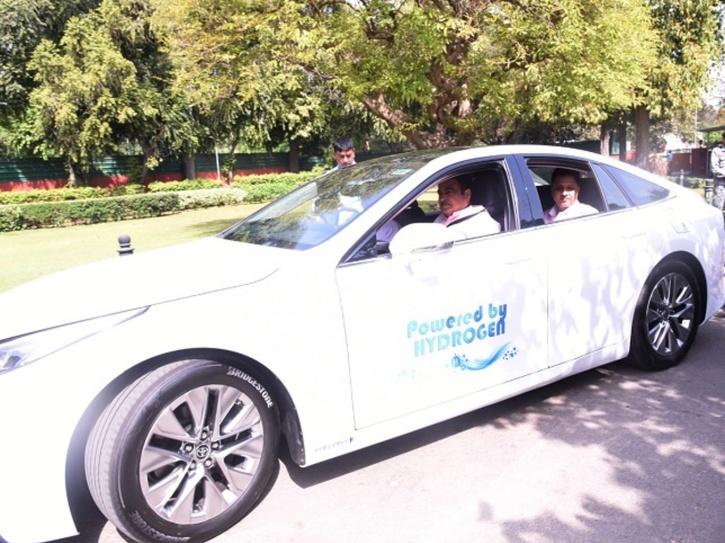- India’s Union Transport Minister Nitin Gadkari on Wednesday arrived at the parliament in a car powered by green hydrogen
- Officially called a Hydrogen-based Fuel Cell Electric Vehicle (FCEV), Gadkari’s very public display came at a time when petrol prices are shooting up in the country every day
- This particular car covers 600 kilometres on a full tank – costing ₹2 per kilometre
India’s Union Transport Minister Nitin Gadkari on Wednesday arrived at the parliament in a car powered by green hydrogen. Officially called a Hydrogen-based Fuel Cell Electric Vehicle (FCEV), Gadkari’s very public display came at a time when petrol prices are shooting up in the country every day.
How efficient is a hydrogen car? This particular car covers 600 kilometres on a full tank – costing ₹2 per kilometre. In addition, filling the fuel tank takes just five minutes! Earlier this month, Gadkari had launched India’s first hydrogen-based FCEV – the Toyota Mirai.
How do hydrogen-powered cars work?
Hydrogen is often called a fuel of the future. A chemical element, it is the most common element found on Earth. By harnessing the power of hydrogen, it may be used safely within a hydrogen fuel cell – the same mechanism that powers hydrogen cars.

What happens in a hydrogen fuel cell? Quite simply, chemical energy is amassed in the form of hydrogen. Then, it is turned into electricity that can power an electric motor. This motor is the hydrogen equivalent of a battery.
Unlike battery electric vehicles (BEV) like the Tesla, hydrogen-powered cars essentially have a little power plant located within the car’s architecture itself. It doesn’t need to be recharged like electric vehicles.

In a solid tank, hydrogen is stored and mixed with air. Later, this air is pumped into the hydrogen fuel cell. At this point, a chemical reaction extracts electrons from the hydrogen. These electrons end up creating electricity and voila! A storage battery is then able to power vehicles like the one we saw Gadkari in.
This process produces zero-emissions and leaves three end products from the reaction in fuel cell – electricity, water, and heat. Exhaust products include warm air and water vapour.
Hydrogen gas tanks are filled up very similarly to petrol and diesel cars… in just a matter of five minutes, making hydrogen cars more advantageous over electric vehicles.
Source By: www.indiatimes.com
Solar panel system , Residential Rooftop solar panel system projects , commercial / EPC solar projects , solar panel manufacturer Ahmedabad Gujarat , Solar inverter Gujarat India



